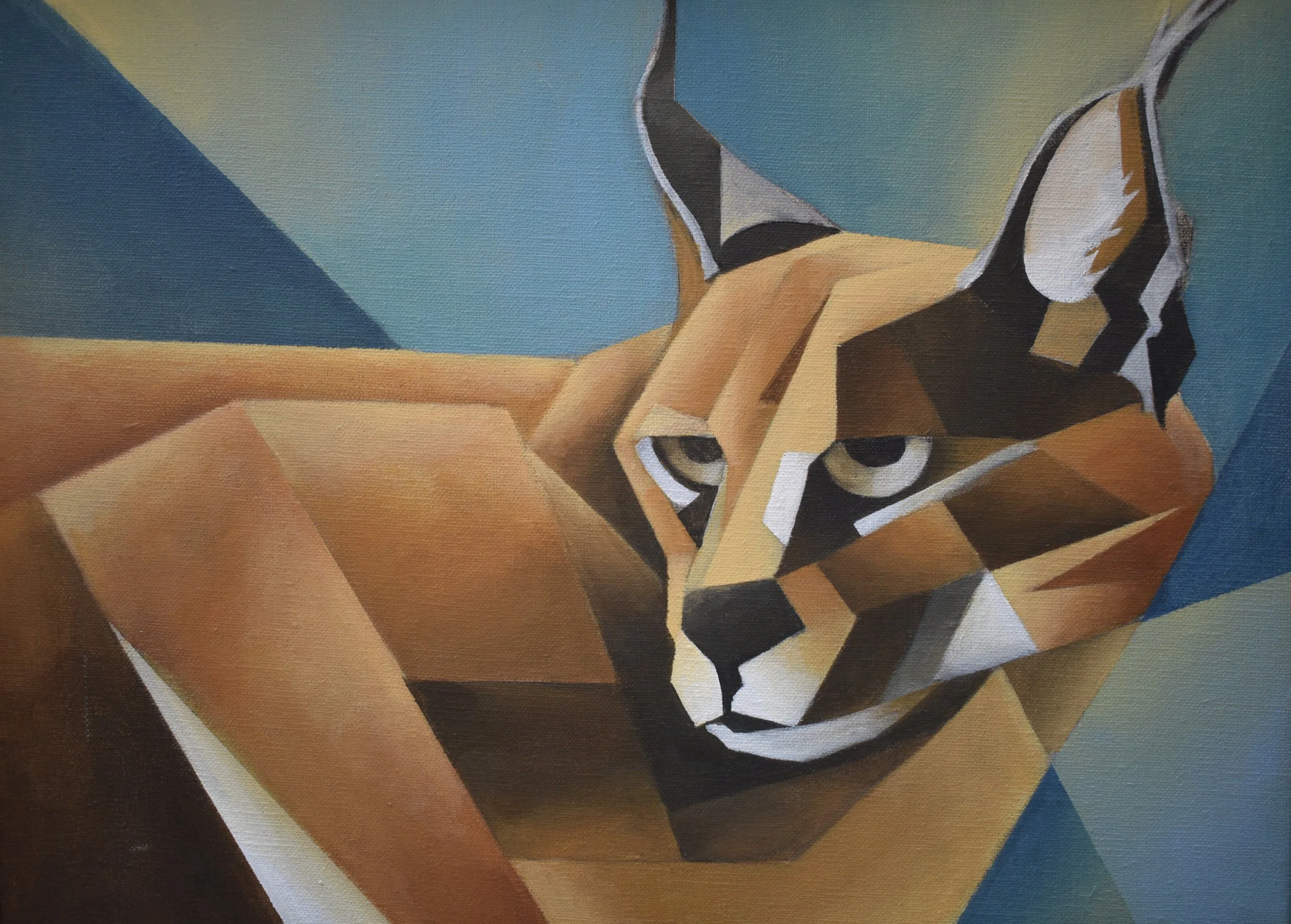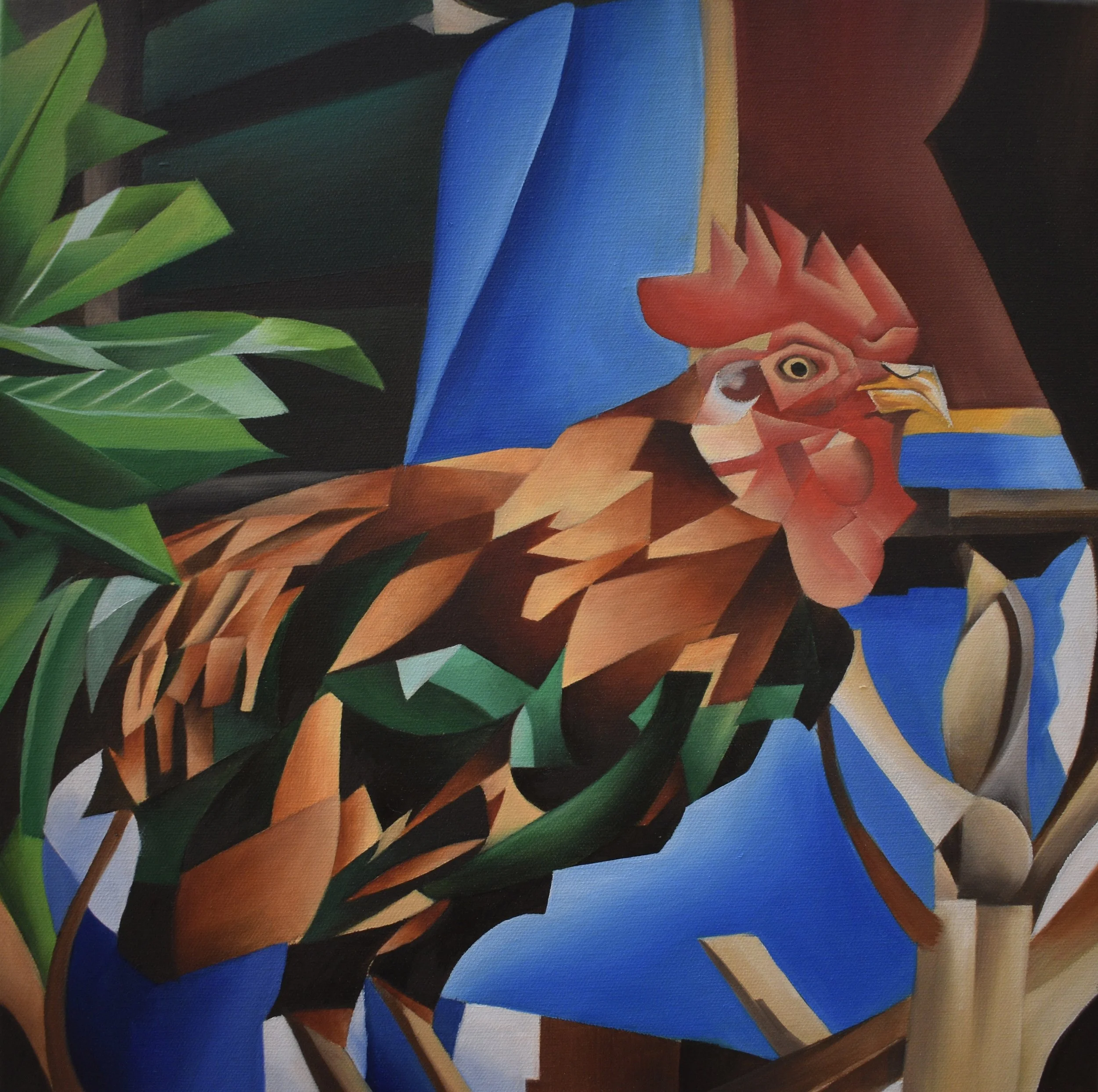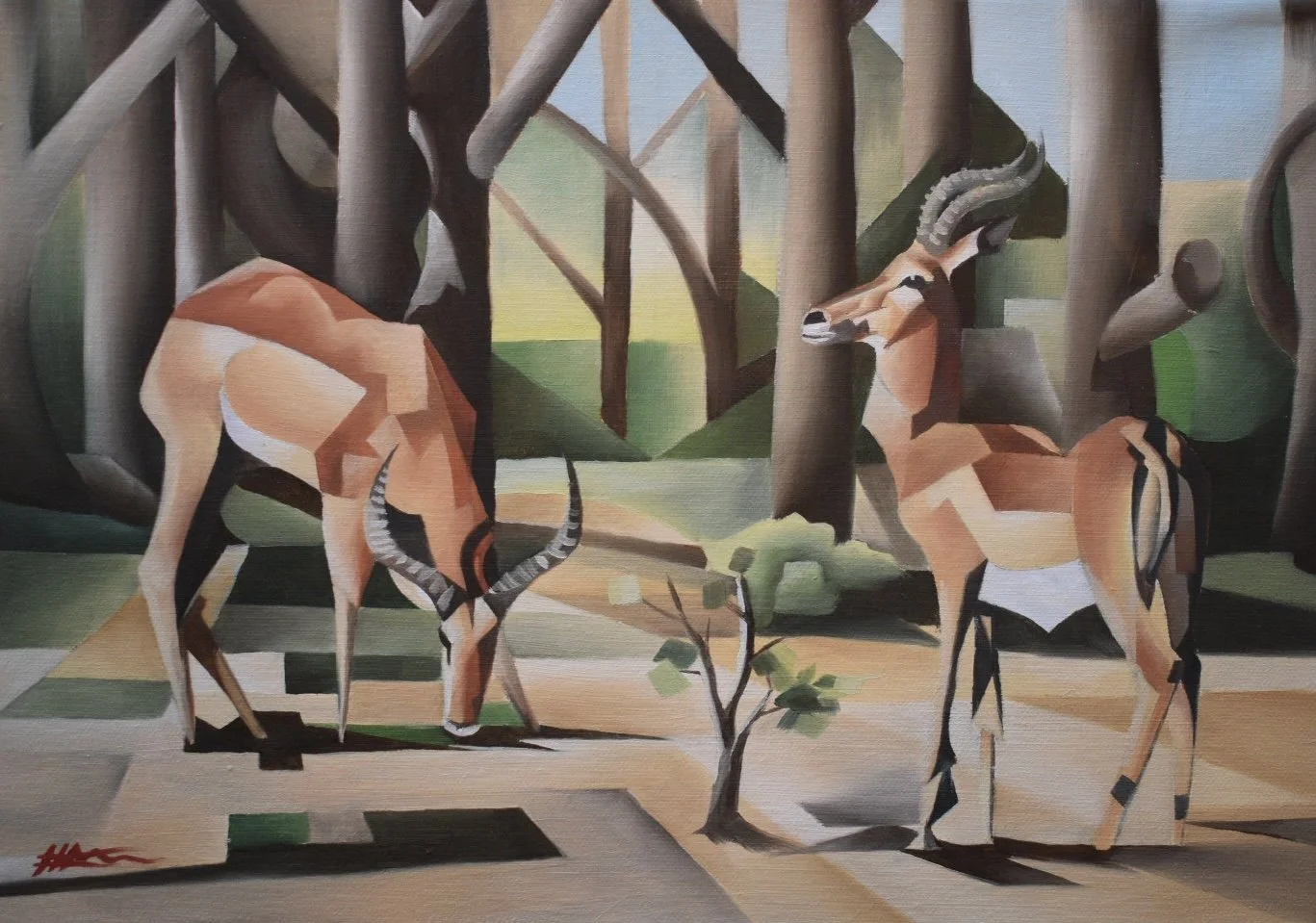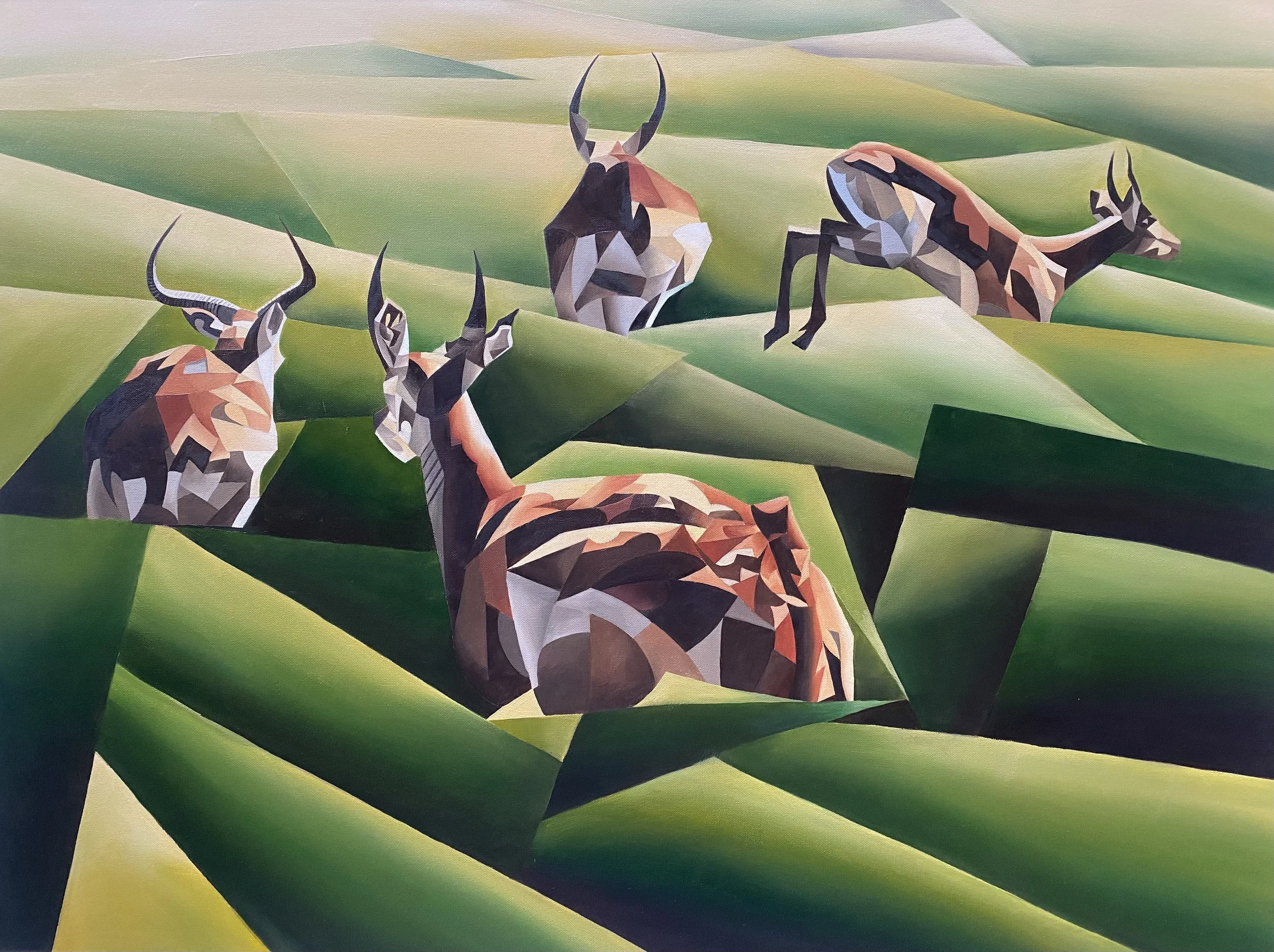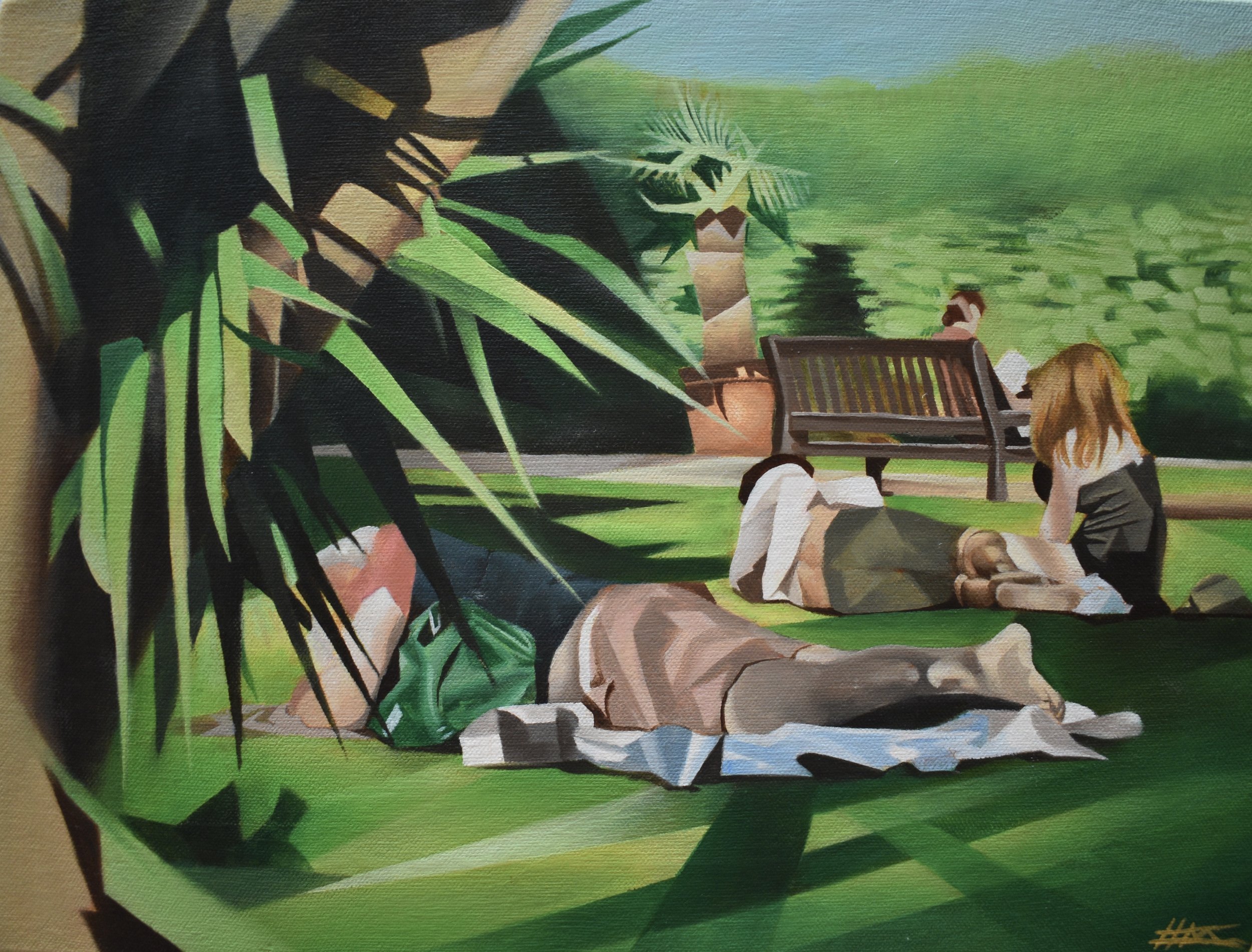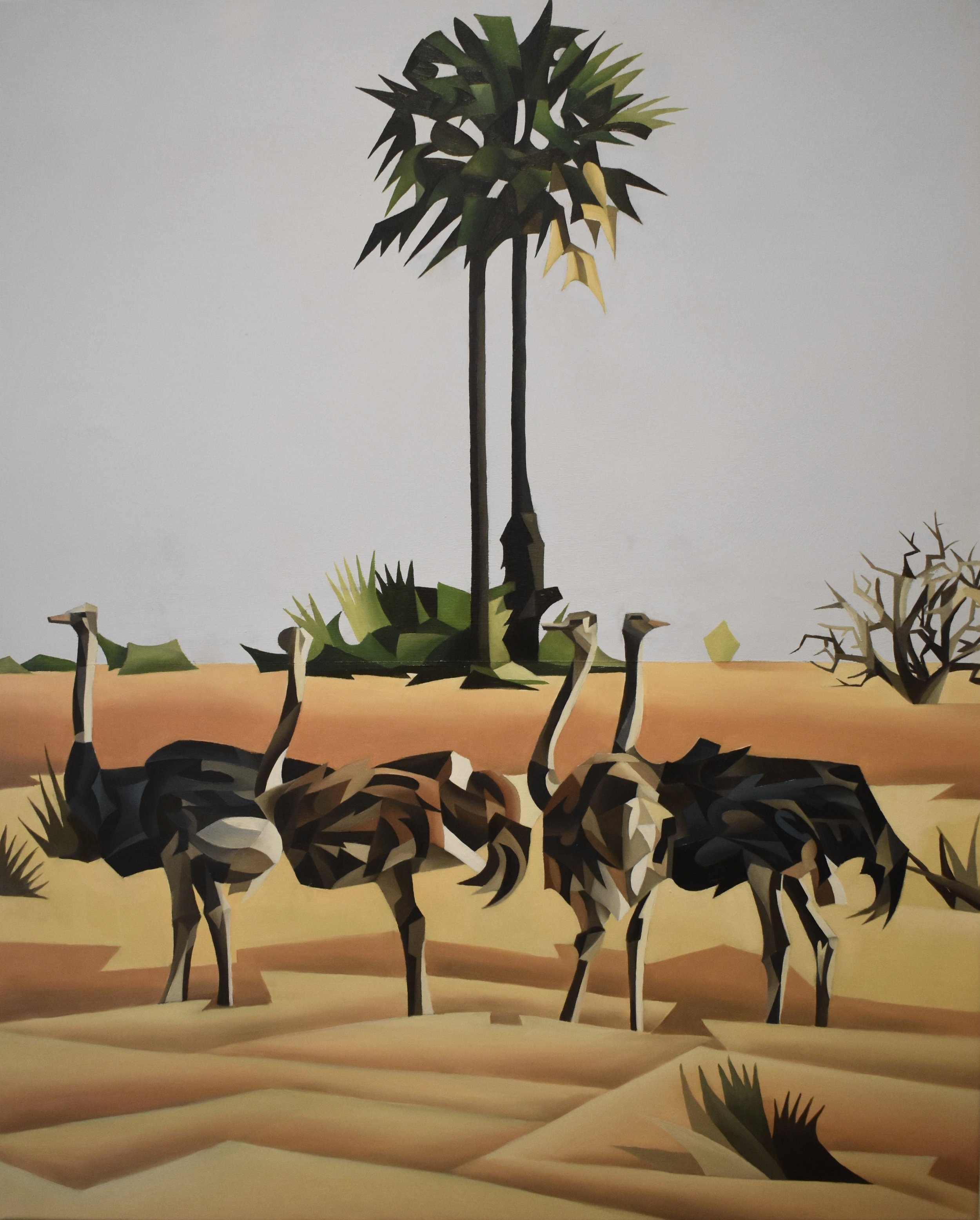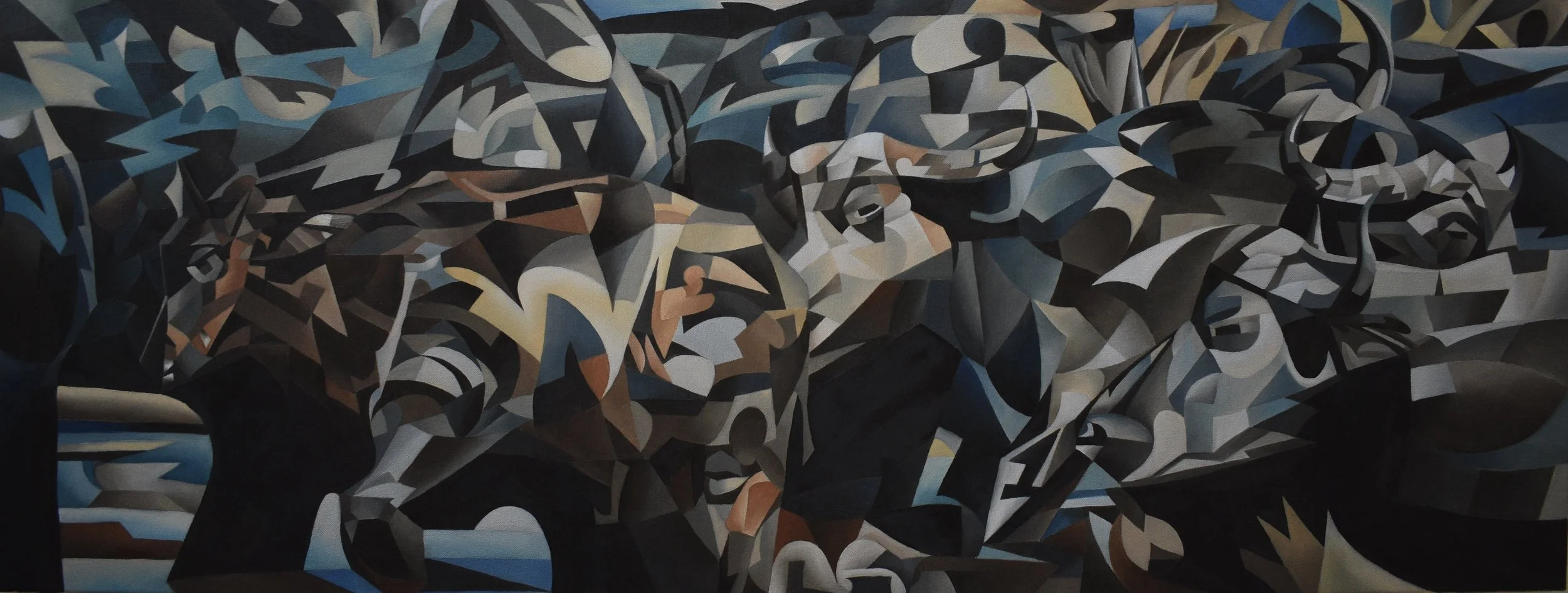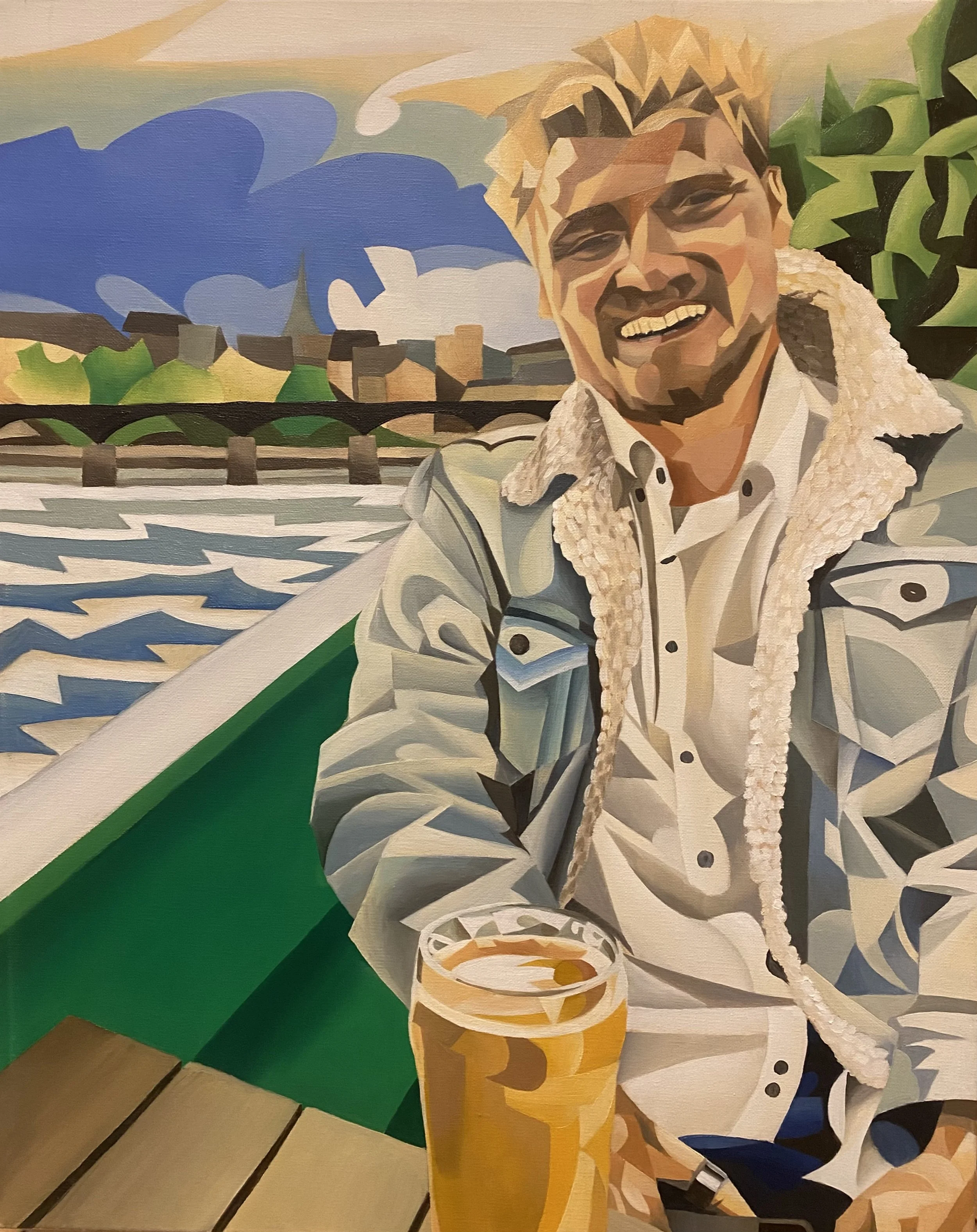Henry McAlpine
Henry McAlpine (b.1998) is a multidisciplinary artist originally from Northumberland. Having been surrounded by the landscape during his upbringing, he has always been fascinated by the richness and diversity of the natural world in relation to his family heritage; rooted in construction. His interest in these varied environments merging together have inspired his practice over the last few years; aiming to balance the architectural motifs that influence his style with his animalistic subjects. McAlpine studied Fine Art at the University of Leeds and learnt traditional drawing and painting techniques shortly after. Since then, he has found further inspiration through his travels to Africa and South-East Asia, where he was immediately captivated by the wide range of wildlife and their settings. He has also accepted requests for private commissions and gained experience assisting mural painters on large scale projects in Central London.
Could you tell us more about your background and how you got into creating art?
I grew up in the Northumbrian countryside in a family who are currently rooted within the construction industry. The natural world and rural landscapes have always provided me with a sense of wonder and were a huge part of my upbringing. My parents didn’t specialise in art, however, they collected a lot of paintings and found myself surrounded by beautiful works of art from an early age. As a result, I’ve always been passionate about creating art, picking up a variety of techniques throughout school and university.
However, my artwork isn’t just a reflection of where I’m from, but it also expresses things that are more personal to me. Having been diagnosed with epilepsy from birth, the world around seemed confusing and somewhat distorted. While this was a fully curable condition in my case, it was something I struggled to accept as part of my identity growing up. However, I’ve come to see this as more of a strength and has inspired my own unique vision of the world.
What does your art aim to say to its viewers?
While my artwork aims to express the beauty and resilience of both worlds I experienced growing up, it simultaneously hints toward the world’s state of vulnerability. I believe as humans we often find ourselves disconnected from the natural world and have become increasingly egocentric through the rise of technology. Each painting I produce is intentionally distorted, implying that our connection with nature has become broken taking tolls on our mental health. However, by painting realistic subjects constructed by a series of detailed fragments, I aim to restore that connection we once had. By introducing this new dimension, I want my viewers to regain that sense of wonder when observing nature.
Can you tell us about the process of creating your work?
Whenever I start a new painting, I often work from my own photographic references. I aim to break down the image into a series of well organised fragments, purely based on the different colours they possess. I never require any special tools such as masking tape or protractors when I paint, but instead draw my designs freehand as I like to maintain some level of rawness in each subject. Prior to painting, I often add an acrylic base layer of some kind (usually yellow ochre or raw sienna) to my canvas to provide each piece with an initial warmness and sense of depth. When adding details in oil paint, I work on each fragment independently, sometimes applying multiple layers once dried to create smoother edges and colour transitions.
What is your daily routine when working?
Every day before I start working, I either go for a walk or a run. This gives me the opportunity to connect with nature and allows me to formulate new ideas before travelling to my studio. I work in a communal art studio in Hackney working beside many other creative businesses. I don’t just work around artists, but also interior designers, film directors and writers just to name a few. I often find myself in a flow state being absorbed in the worlds that I paint. My process of painting is highly delicate, working for hours on end without many breaks.
What is the essential element in your art?
I feel as though there’s a high level of energy in my artwork. I’m very much drawn to art movements like Futurism and their emphasis on movement and geometry. Through this playfulness of shape and colour, there’s an almost restless nature to the work I produce.
In your opinion, what role does the artist have in society?
I believe the artist has the power of bringing communities together. Not only do they have the capability of creating things that are visually striking, but they make us think on a deeper level. They create safe environments and allow the viewer not only to observe them from a safe distance, but also to feel emotions without any form of judgement. Similar to the ways when we watch films or listen to music.


